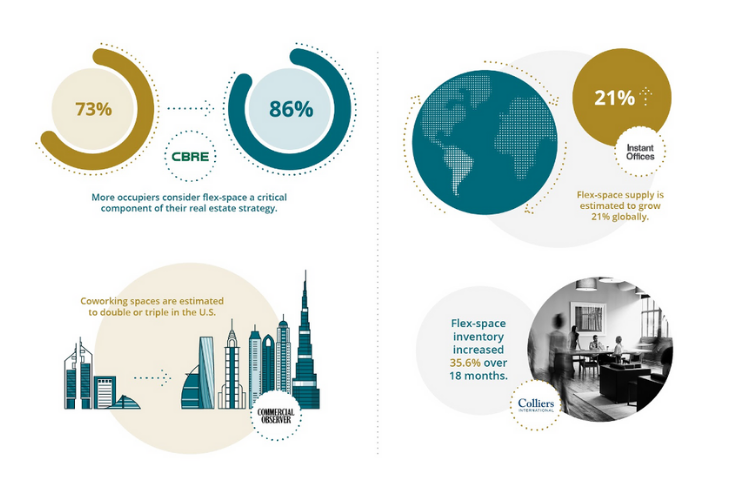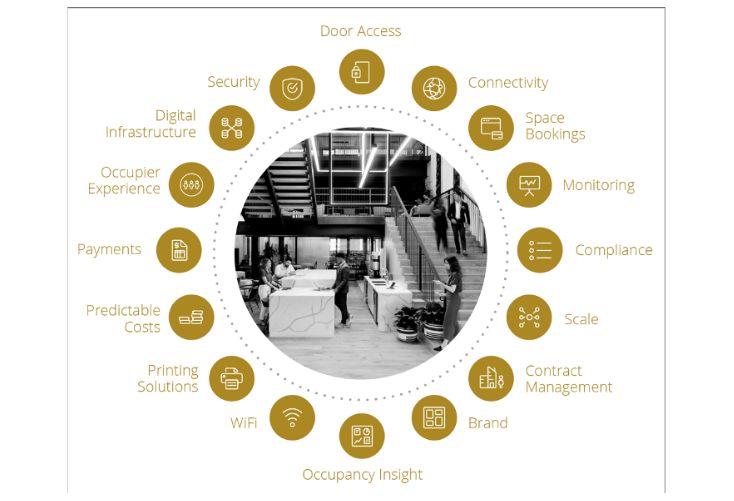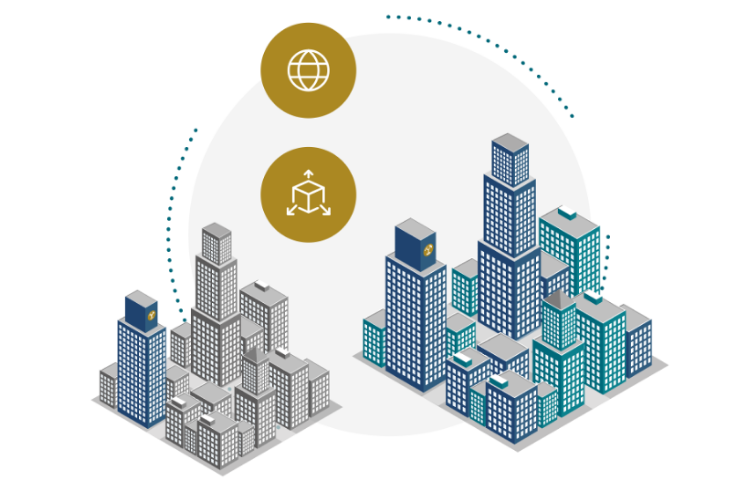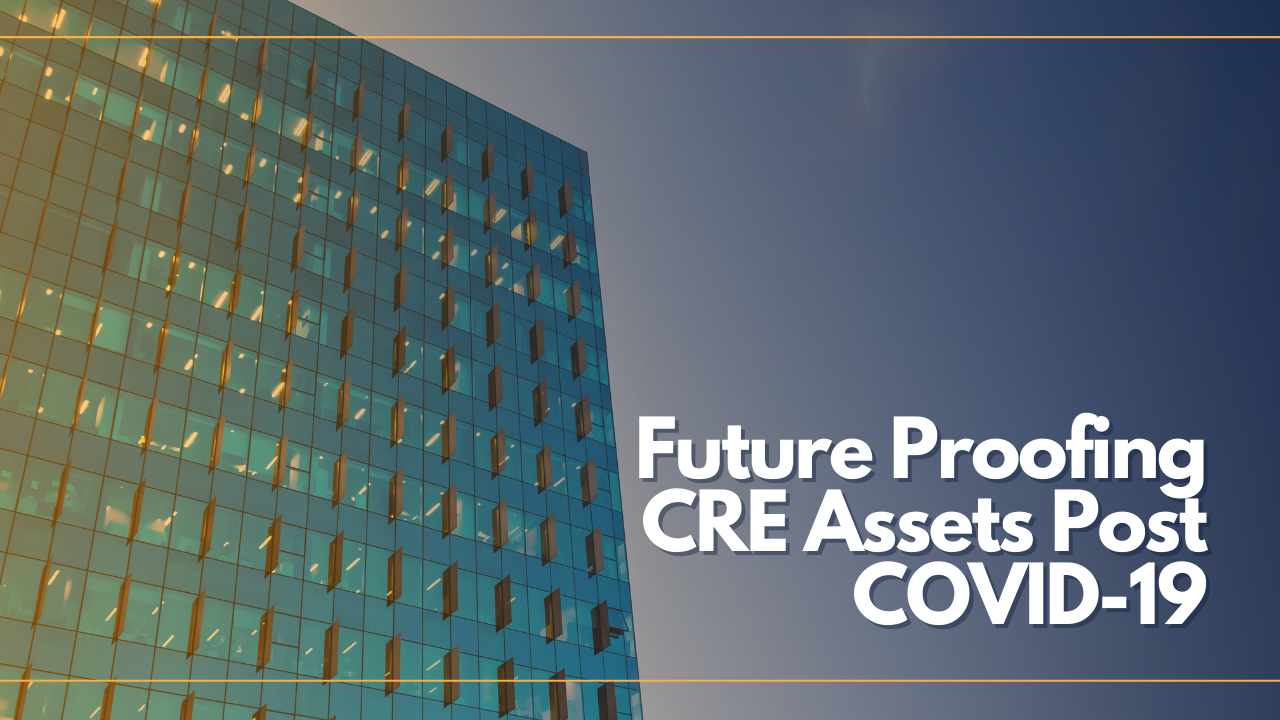- The most profound change in office space from 2020 is the power shift from corporations dictating how office space is designed and managed to a model that recognizes that the individual needs of each worker must be at the center of the office experience.
- In 2021, even with a vaccine, many will not be returning to the office for the structured five-day in-office schedule from 9 to 5.
- The new normal in office space is hybrid, and commercial real estate owners and operators will have to pay attention to trends such as automation, security, and compliance.
This article was originally published on Work Design Magazine.
A year after COVID-19, the world looks forward to a more normalized 2021. Hope is clearly on the horizon as the vaccines roll out worldwide; now is the time to take a look at what the future of the office will look like. The data tells the story that a major shift to flexible office space is underway.
- A recent tenant survey from CBRE indicates that 86 percent of respondents see flexible office space as a critical component of their future real estate strategies. (Even before the pandemic, experts predicted that by 2030, 30 percent of commercial office space is predicted to be flex space.)
- According to a recent Instant Office Report, only about one percent of current commercial real estate is flex space.
- The Commercial Observer estimates that coworking spaces are likely to double or triple in the U.S. in five years.
- The pivot to hybrid will be powered by flexible workspaces; a November 2020 report from Colliers International confirms that inventory for flexible work spaces has increased by 36.5 percent in just 18 months.

It makes sense; landlords are eager to fill empty spaces with paying tenants, and corporations and employees are weary of 100 percent remote working that can negatively impact workplace culture, productivity, and spontaneous creativity. Because we understand that remote work is feasible and the in-person office work is valuable, the hybrid model is here to stay.
In my view, the most profound change in office space from this year is the power shift from corporations dictating how office space is designed and managed to a model that recognizes that the individual needs of each worker must be at the center of the office experience. COVID accelerated underlying trends such as remote working capabilities and the move towards flexible real estate products. It has forever changed how, where, and when a global workforce collaborates and gets work done.
In 2021, even with a vaccine, many will not be returning to the office for the structured five-day in-office schedule from 9 to 5. The new normal in office space is hybrid, and commercial real estate owners and operators will have to pay attention to these trends:
Flexible Office Space
The new normal in office space must shift from a long-term, physical product to a service-focused asset model to accommodate high transaction volumes and to respond to tenant requirements for flexible options such as coworking, private offices and shorter-lease terms. Most landlords aren’t standing still. They are increasingly considering flex models – whether that means utilizing their internal teams or partnering with third party operators. The reality is that running a flexible workspace operation is not one-size-fits-all and it is very complex. Technology is a key component to enabling flexible, move-in ready office assets that help landlord’s offerings stay relevant and ultimately increase tenant’s productivity.

Automation and Technology
Using automation and technology to reduce operating costs for flex space providers to maximize profitability: WeWork is expected to finally IPO and have aggressively leveraged technology to automate workflows for both an enhanced revenue model and more efficient operations. They are market leaders that will accelerate this transformation.
Hybrid Technology
The demand for hybrid technology to accommodate the demands of an agile workforce will be critical to future proof commercial real estate assets. Multi-site owners must offer a seamless and secure experience for workers to gain access to buildings, amenities and collaborative spaces, while providing the technology for hybrid working teams to stay connected and be productive. Landlords who provide technology to enhance collaboration will have a powerful competitive advantage.
Security
Landlords and pure flex-space operators are quickly learning that the security requirements of tenants, particularly enterprise companies, are more important than ever when considering their flex office options. Off the shelf technology products will not suffice. Landlords need to utilize industry leading technology and software that meet a wide range of technical requirements that ‘check’ that critical box for their occupiers.
Let’s address the complexity and unique challenges of managing the hybrid office model. It must accommodate the preferences of a multi-generational and distributed workforce. Our data shows that younger workers prefer urban office locations so they can enjoy city amenities after work but older workers prefer suburban offices to avoid long commutes and to be closer for childcare. Multi-site owners are offering a hub and spoke model so that workers have options that suit their specific needs.
Perhaps the biggest challenge facing commercial office operators to attract companies to occupy spaces with confidence and trust is delivering enterprise level physical and digital security. It is not something that is as simple as flipping a switch to offer upgrades that exceed home offices or coffee shop WiFi. Landlords can’t just go into Staples to buy servers and networking equipment and at the push of a button have it run. It takes 80 to 100 engineers to monitor and manage the networks for small to very large enterprises. ‘Build your own’ is a risky and ill-advised strategy. Valuable tenants like Amazon would never consider occupying space without best-of-breed technology to support a flexible office space.

In 2021, the trend for return to the office from big tech companies is for large, customizable spaces that occupy an entire floor with a flex space model for shorter leases with the ability to scale up and down as necessary. This keeps workplace culture thriving with confidence in collaborating and creating in person or remotely in state-of-the-art agile spaces.
- Compliance: Companies of all sizes can be subject to differing regulatory and governance requirements. For example, PCI-DSS for companies that handle payments, HIPPA for companies that handle personal medical data, or financial and fintech firms which will have stringent requirements. Many will also need to conform to generic security certifications such as ISO27001 and SOC2.
- Not all risks are visible: As a space provider, you’re responsible for ensuring that your space and infrastructure are safe from possible breaches and that account numbers and other sensitive client data are safely stored. Your tenants may hold you liable for compliance, disclosures, and privacy requirements. You need to know how and where data is stored, how it’s managed, who has access to it, and what protocols are in place for it – whether lock and key, or firewalls and limited permissions.
- Continual testing of physical, cyber, network security, cloud infrastructure to ensure that everything is working all the time.
The office is far from ‘dead’ but it is forever changed. We have a new appreciation for the companionship of our fellow workers. Workspaces will look different. Instead of the wide open office with about 150 square feet of space per worker, future offices will have larger individual spaces (250 square feet) with partitions to separate workers. Smart technology with touch-free features will power building and elevator access, printing, reserving meeting spaces booking tools, and signal that spaces are clean in modern flexible offices. Commercial real estate owners that rapidly embrace this new reality will survive and thrive. I am certain that while the overall footprint of commercial office space may not expand in 2021, the portion of current commercial office spaces will rapidly fill up with flexible office spaces as companies retrofit and resize commercial real estate portfolios.

Jeremy Bernard of essensys shares the secret to future proofing commercial real estate: leveraging technology.


 Dr. Gleb Tsipursky – The Office Whisperer
Dr. Gleb Tsipursky – The Office Whisperer Nirit Cohen – WorkFutures
Nirit Cohen – WorkFutures Angela Howard – Culture Expert
Angela Howard – Culture Expert Drew Jones – Design & Innovation
Drew Jones – Design & Innovation Jonathan Price – CRE & Flex Expert
Jonathan Price – CRE & Flex Expert












